The Rogue Way—Sven's Return to the Meta
By KawaiiSocks on
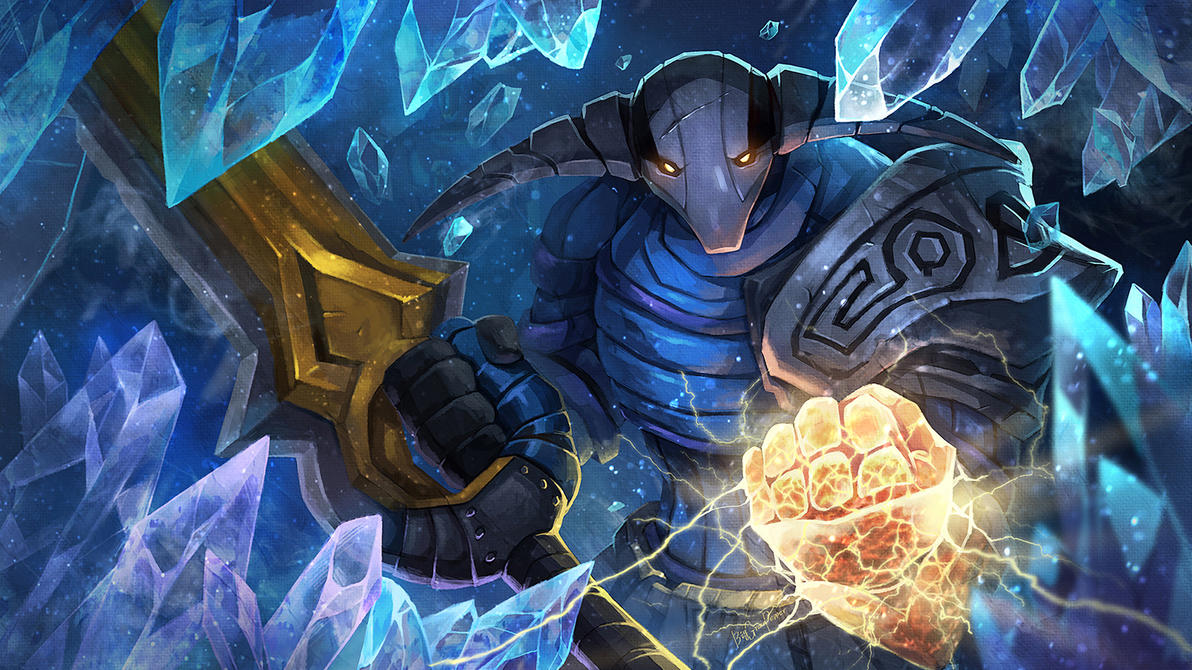
At the highest level of play Dota is a game of efficiency—every little bit of advantage can translate into an even bigger one, creating a snowball effect. The degree to which this holds true has been somewhat diminished in recent patches, with the introduction of comeback gold mechanics, but the core principle stays the same—if, on average, your team can capitalize more of the map’s resources, it has a better chance at winning the game.
This efficiency has been especially popular in the last several patches. Flash-farming heroes have been dominating the meta for almost a year, starting not long before TI5. This resulted in several issues with the game, one of which was low interactivity between teams in the early and mid-game stages. The nerf to these flash-farming mechanics was a welcome addition in 6.86. As was aptly put by ALOHADANCE: “people [were] not playing Dota 2, but were playing TI”.
It seems, however, that pros have managed to find a way to still benefit from the same principles, albeit on a smaller scale. Introducing  Sven, the Rogue Knight, who falls into the category of heroes who can be good at pretty much every stage of the game—he is a decent laner, flash-farmer, tempo-controller and hard carry all in one menacing package.
Sven, the Rogue Knight, who falls into the category of heroes who can be good at pretty much every stage of the game—he is a decent laner, flash-farmer, tempo-controller and hard carry all in one menacing package.
Meta Statistics
Sven is currently one of the top picks throughout all skill brackets. His pick rate ranges from 14% to 16% with the highest value in 5k+ games. His win rate this month is consistently over 50% in all skill brackets, with a minimum of 52.57% in 5k+ and a maximum of 54.71% in 2-3k games.
Lately, however, more people seem to respect the Sven pick, and his win rate for this week is slightly lower, most noticeably in the 5k+ bracket, where it is currently at 51.96%. This is especially interesting given how the global average win rate for the hero has been increasing by a small margin since the Shanghai Major.
Overall, the hero still holds a firm “Winner” tier position in our tier-list, and it is unlikely to change.
The Rogue’s Path
Laning
 Sven is an incredibly strong laner—his starting damage of 65 and decent HP pool make for a hero who is really hard to harass out of lane. The starting armor of 5 also helps a great deal by increasing the efficiency of consumables. His built-in 2-second stun with decent damage also allows for some punishment on an enemy. This, however, is counterweighted by a relatively big manacost on
Sven is an incredibly strong laner—his starting damage of 65 and decent HP pool make for a hero who is really hard to harass out of lane. The starting armor of 5 also helps a great deal by increasing the efficiency of consumables. His built-in 2-second stun with decent damage also allows for some punishment on an enemy. This, however, is counterweighted by a relatively big manacost on 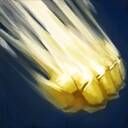 Storm Hammer, but it is rare that you will need this spell more than twice in the early-game. Overall, except for an arguably poor attack animation, Sven is among the strongest laners.
Storm Hammer, but it is rare that you will need this spell more than twice in the early-game. Overall, except for an arguably poor attack animation, Sven is among the strongest laners.
Flash-farming
 Sange and Yasha,
Sange and Yasha,  Helm of the Dominator,
Helm of the Dominator,  Blink Dagger
Blink Dagger
It is a recent trend to ignore  Storm Hammer past level 1 and concentrate on
Storm Hammer past level 1 and concentrate on 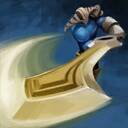 Great Cleave instead. Even at level 2 this ability surpassess the cleave effect of
Great Cleave instead. Even at level 2 this ability surpassess the cleave effect of  Battle Fury, disposing neutral camps quicker. Later levels also make clearing out stacked ancients a trivial task. Having extra points in
Battle Fury, disposing neutral camps quicker. Later levels also make clearing out stacked ancients a trivial task. Having extra points in 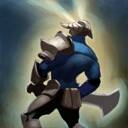 Warcry helps as well, since under its effect, Sven can negate most of the incoming damage with a lifesteal item.
Warcry helps as well, since under its effect, Sven can negate most of the incoming damage with a lifesteal item.
The game-changer came in the form of  Sange and Yasha. A big part of flash-farming has always been mobility, since a hero needs to walk from camp to camp to clear them out. S&Y gives exactly that. Coupled with Warcry,
Sange and Yasha. A big part of flash-farming has always been mobility, since a hero needs to walk from camp to camp to clear them out. S&Y gives exactly that. Coupled with Warcry,  Sven can run at a respectable 435 ms, and since the hero doesn’t really need the spell to negate damage against regular neutrals, it is best used to travel between taking out stacks.
Sven can run at a respectable 435 ms, and since the hero doesn’t really need the spell to negate damage against regular neutrals, it is best used to travel between taking out stacks.
 Helm of the Dominator is another tool, which allows Sven to eclipse anything on the map in terms of farming speed. If previously it was the support’s job to stack the ancients, the current meta doesn’t necessarily allow for it—to stay relevant, supports should get farm and stay active on the map.
Helm of the Dominator is another tool, which allows Sven to eclipse anything on the map in terms of farming speed. If previously it was the support’s job to stack the ancients, the current meta doesn’t necessarily allow for it—to stay relevant, supports should get farm and stay active on the map.
Later on this item can also provide your team with a very strong aura, be it a 30% damage increase from an Alpha Wolf or even a heavily underrated 12% ms bonus from Kobold Foreman. The latter option comes into play far less than it should, since it doesn’t matter how much you hit for if you are unable to get close to the enemy.
Finally,  Blink Dagger will allow for extra mobility during the farming stage as well as open the door for the hero to get involved in the fights and enter the mid-game.
Blink Dagger will allow for extra mobility during the farming stage as well as open the door for the hero to get involved in the fights and enter the mid-game.
Tempo Control
 Black King Bar,
Black King Bar,  Assault Cuirass or
Assault Cuirass or  Moon Shard
Moon Shard
With a decent laning stage, a typical Sven should have Treads, S&Y, HotD and Blink by 18-20 minutes, and this is where the tempo control aspect of the hero has the potential of coming into play.
At this point in the game, the hero is on a much higher power level, compared to most other cores. He typically has more damage, armor, HP and movespeed than any other hero in the game, and he can use this advantage to both cripple enemy cores and take objectives. In-between using 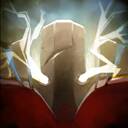 God's Strength he can allow himself to farm, but in many scenarios remaining completely inactive can be considered a mistake.
God's Strength he can allow himself to farm, but in many scenarios remaining completely inactive can be considered a mistake.
Scenarios where farming more, typically for a  Black King Bar, are quite self-explanatory—too many disables on the enemy team can render Sven useless. More than any other hero in the game, Sven needs to have a way to hit the enemy, otherwise this build, with a strong focus on cleave, won’t work as well as it should.
Black King Bar, are quite self-explanatory—too many disables on the enemy team can render Sven useless. More than any other hero in the game, Sven needs to have a way to hit the enemy, otherwise this build, with a strong focus on cleave, won’t work as well as it should.
In games where the enemy has spells that pierce spell immunity, it is also necessary to have the battlefield warded, since it will allow your team to locate the problematic heroes early in the fight and shut them down, before they get to react.
Hard Carry
 Satanic and DPS items,
Satanic and DPS items,  Refresher Orb
Refresher Orb
Sven has the strongest single target damage auto-attack in the game, period. Even the critical strike abilities do not make up the difference of what essentially is a triple-damage buff. The introduction of  Moon Shard also somewhat solved the problem of having no item slots later in the game for AS items and can even be considered one of the reasons the hero got so popular lately.
Moon Shard also somewhat solved the problem of having no item slots later in the game for AS items and can even be considered one of the reasons the hero got so popular lately.
The only problem the hero has is getting close enough to the enemy to actually hit him, hence the focus on mobility items in current builds. Mobility aside, the late-game choices for the hero are quite open, since he almost always has one slot available and has no problem farming for it. The decision making behind the last slot is not too complicated— Daedalus has the highest ROI for damage,
Daedalus has the highest ROI for damage,  Divine Rapier aside.
Divine Rapier aside.  Monkey King Bar is a must against evasive opponents, while
Monkey King Bar is a must against evasive opponents, while  Abyssal Blade can be a necessary item against mobile heroes you can’t kill within two seconds, which is a rather rare occasion.
Abyssal Blade can be a necessary item against mobile heroes you can’t kill within two seconds, which is a rather rare occasion.
Finally, having double  Black King Bar’s and
Black King Bar’s and  God's Strength’s is never a bad idea, hence a Refreshers Orb can and should be the 7th item and can even be occasionally built earlier. Dedicating a separate courier and micro-managing it can seem rather tedious for most players, but the effect is definitely worth it. It is especially good when facing the enemy team with long, high-impact cooldowns, since it will allow Sven to react on an opening much faster.
God's Strength’s is never a bad idea, hence a Refreshers Orb can and should be the 7th item and can even be occasionally built earlier. Dedicating a separate courier and micro-managing it can seem rather tedious for most players, but the effect is definitely worth it. It is especially good when facing the enemy team with long, high-impact cooldowns, since it will allow Sven to react on an opening much faster.
The other paths
The build presented above was the most popular build among professional players and should work really well in most pubs. This doesn’t mean that it is the only build for the hero or that it is going to be the most effective one.
 Sange and Yasha can be substituted with
Sange and Yasha can be substituted with  Drum of Endurance. While active, Drums will net a total of 441 ms, which is only marginally higher than the S&Y build, but for half the price. It is ill-advised to use Drums active while farming, however. Overall, it can be a superior option if you want to be aggressive earlier in the game. Moreover, going for extra levels in
Drum of Endurance. While active, Drums will net a total of 441 ms, which is only marginally higher than the S&Y build, but for half the price. It is ill-advised to use Drums active while farming, however. Overall, it can be a superior option if you want to be aggressive earlier in the game. Moreover, going for extra levels in  Storm Hammer can be justified with an increased mana pool, which can open up different possibilities. This build can also be better if you are likely to face a lot of pressure early on, since it will allow for better fighting pre-20 minute mark.
Storm Hammer can be justified with an increased mana pool, which can open up different possibilities. This build can also be better if you are likely to face a lot of pressure early on, since it will allow for better fighting pre-20 minute mark.
 Armlet of Mordiggian is by far the most efficient DPS item, but it does require a decent amount of skill to utilize effectively. It increases the farm speed of the hero as well and works amazingly well with lifesteal items. When extra mobility isn’t a priority, it can be a great choice, if the player knows what he is doing.
Armlet of Mordiggian is by far the most efficient DPS item, but it does require a decent amount of skill to utilize effectively. It increases the farm speed of the hero as well and works amazingly well with lifesteal items. When extra mobility isn’t a priority, it can be a great choice, if the player knows what he is doing.  Blink Dagger still remains a core item.
Blink Dagger still remains a core item.
 Mask of Madness is currently in a very bad place. MoM+Warcry will net 438 ms, but the extra damage debuff will get you killed very fast. This item can still work when facing a lineup with nothing that can prevent you from actually hitting the enemy, but these situations are rare. Most of the time, it is a high risk-low reward item choice.
Mask of Madness is currently in a very bad place. MoM+Warcry will net 438 ms, but the extra damage debuff will get you killed very fast. This item can still work when facing a lineup with nothing that can prevent you from actually hitting the enemy, but these situations are rare. Most of the time, it is a high risk-low reward item choice.
 Assault Cuirass and
Assault Cuirass and  Moon Shard seemingly have the same effect but are extremely different in nature. The latter is a better single-target DPS item, which can allow for easy solo pick-offs, especially during the night-time, where you will typically have a vision advantage. The former is better in team-fights and in taking the objectives, but it also costs substantially more. In a typical game, having both of these items is never a bad idea, but the build order should be heavily determined by what your gameplan is and what enemies you are facing.
Moon Shard seemingly have the same effect but are extremely different in nature. The latter is a better single-target DPS item, which can allow for easy solo pick-offs, especially during the night-time, where you will typically have a vision advantage. The former is better in team-fights and in taking the objectives, but it also costs substantially more. In a typical game, having both of these items is never a bad idea, but the build order should be heavily determined by what your gameplan is and what enemies you are facing.
While on the topic of AS, it is also worth noting that  Butterfly can be a decent choice for the hero, especially if facing multiple right-click heroes. Moreover, in a frequent scenario of Sven vs OD, it can give a huge edge, since the latter is extremely reliant on actually landing the hits, but will have to sacrifice a lot for going
Butterfly can be a decent choice for the hero, especially if facing multiple right-click heroes. Moreover, in a frequent scenario of Sven vs OD, it can give a huge edge, since the latter is extremely reliant on actually landing the hits, but will have to sacrifice a lot for going  Monkey King Bar.
Monkey King Bar.
Finally,  Heart of Tarrasque and
Heart of Tarrasque and  Eye of Skadi can be situationally good when facing extremely high burst damage coupled with a strong lock-down and no save on teammates. The latter is also quite decent against now popular [missing hero: outworld-devourer] very late into the game.
Eye of Skadi can be situationally good when facing extremely high burst damage coupled with a strong lock-down and no save on teammates. The latter is also quite decent against now popular [missing hero: outworld-devourer] very late into the game.
Dealing with Sven
All of the above strengths make for a very strong hero, however there are certain counter-plays which can make dealing with him much easier.
First of all, having  Force Staff is almost never a bad idea. Getting a hero out of Sven’s focus can leave him vulnerable after the initial jump, as well as saving the teammate. It is also necessary to always be mindful of where Sven is, since a single force-staff is unlikely to save several targets under the effects of an AoE stun.
Force Staff is almost never a bad idea. Getting a hero out of Sven’s focus can leave him vulnerable after the initial jump, as well as saving the teammate. It is also necessary to always be mindful of where Sven is, since a single force-staff is unlikely to save several targets under the effects of an AoE stun.
 Ghost Scepter is almost self-explanatory. Sven has no ways of dealing non-physical damage and is very unlikely to get
Ghost Scepter is almost self-explanatory. Sven has no ways of dealing non-physical damage and is very unlikely to get  Diffusal Blade, unlike many other popular cores. This item, however, will not save you if you are disabled, hence it is necessary to be extremely fast in activating it, after Sven’s blink and before the stun lands.
Finally, there are spell-immunity piercing disables. After Sven has lost his initial focus, he is still capable of running extremely fast and is generally tanky enough to get bursted down. There are a ton of spells which have the ability to disrupt a rampaging enemy, but most of them have a rather high cooldown cost associated with it—
Diffusal Blade, unlike many other popular cores. This item, however, will not save you if you are disabled, hence it is necessary to be extremely fast in activating it, after Sven’s blink and before the stun lands.
Finally, there are spell-immunity piercing disables. After Sven has lost his initial focus, he is still capable of running extremely fast and is generally tanky enough to get bursted down. There are a ton of spells which have the ability to disrupt a rampaging enemy, but most of them have a rather high cooldown cost associated with it—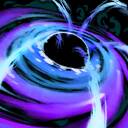 Black Hole,
Black Hole,  Chronosphere,
Chronosphere, 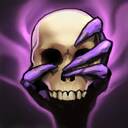 Fiend's Grip and
Fiend's Grip and 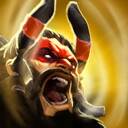 Primal Roar are probably the most reliable ways to deal with Sven, but the heroes generally respawn much faster than the associated cooldowns.
Primal Roar are probably the most reliable ways to deal with Sven, but the heroes generally respawn much faster than the associated cooldowns.
More often than not, the team will have to rely on regular abilities which can help dealing with this hero. Most common utility spell in the current meta which can neutralise Sven is an auto-attack modifier on [missing skill: beastmaster-call-of-the-wild-boar-5580]. 40% ms decrease is generally sufficient to kite Sven long enough before his spell immunity wears off. Viper’s  Viper Strike is another ability which can neutralise Sven for long enough for his teammates to react. Of course
Viper Strike is another ability which can neutralise Sven for long enough for his teammates to react. Of course 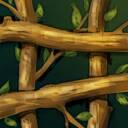 Sprout is definitely worth mentioning—adequate ground targeting of the spell is not too complicated and generally produces great results.
Sprout is definitely worth mentioning—adequate ground targeting of the spell is not too complicated and generally produces great results.
There are also “root” type abilities which will give Sven a rather hard time—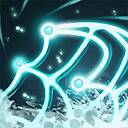 Ensnare from Naga Siren as well as from the Dark Troll Summoner are on a short enough cooldown to allow for counter-plays without sacrificing too much in terms of macro game. This list could go on terribly long—there is currently a decent amount of spells with a spell immunity piercing disabling properties. The general idea, however, remains the same—while having big ultimates dedicated to countering Sven is good, having more regular abilities on shorter cooldowns is better.
Ensnare from Naga Siren as well as from the Dark Troll Summoner are on a short enough cooldown to allow for counter-plays without sacrificing too much in terms of macro game. This list could go on terribly long—there is currently a decent amount of spells with a spell immunity piercing disabling properties. The general idea, however, remains the same—while having big ultimates dedicated to countering Sven is good, having more regular abilities on shorter cooldowns is better.
Final Thoughts
 Sven is essentially
Sven is essentially  Anti-Mage of the current patch. It was the hero professional players relied on when in doubt, and the amount of similarities between the heroes are vast.
Anti-Mage of the current patch. It was the hero professional players relied on when in doubt, and the amount of similarities between the heroes are vast.
Sven sacrifices a lot of macro play Anti-Mage can provide, by being better in certain micro-elements. He is also a more reliable pick. In a vacuum his power level is generally higher than that of an Anti-Mage, except for super late-game, where Cleave is no longer necessary on Anti-Mage, whereas Blink is still very much a must on Sven, essentially giving the former an edge of one item slot. This, however, is counterweighted by the latter’s stat growth and DPS, as well as survivability against physical attacks.
Overall, the hero is currently in a very good spot. There are certain match-ups which will never be favorable to Sven, most notably the  Beastmaster, but overall the hero is definitely worth exploring and trying out.
Beastmaster, but overall the hero is definitely worth exploring and trying out.
Image Sources:
Copyright 2024 Elo Entertainment Inc.. 我们正在招聘! Dota 2 is a registered trademark of Valve Corporation.
 Power Treads
Power Treads
If Sven gets a Battlefury, He doesn't even need to hit you, he will hit creeps and you will die xD
Nice analysis. Been reading your writing since last year and I see room for improvements, e.g. shorten your sentences, simplify your thoughts and reduce commas in a sentences (reduce run-on sentences). This can make reading a lot more comfortable.
Свен в модде при любой погоде!!!
rtz my boi :( battlefury sven is optional